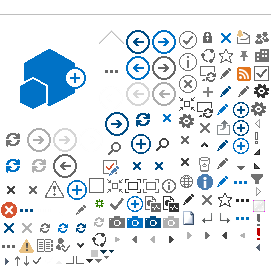Our industry has been witnessing intense consolidation for at least the last decade, but we have never seen this type of activity at the top of the market. Will these mega deals usher in a new era of deal-making?
In many ways, the market for insurance broker mergers and acquisitions in 2024 was a lot like 2023. The total number of announced deals, per preliminary numbers from SNL Financial, was almost identical—580 in 2023 and 587 in 2024. The most active acquirers in 2023 were also the most active in 2024, with private equity-backed brokers getting credit for the lion's share of announced transactions. Meanwhile, valuations for brokers remained largely unchanged at some of the highest levels that the industry has ever seen.
However, one trend differentiated 2024: the mega deals. In April, Aon closed on the acquisition of NFP at an enterprise value of $13 billion. In September, Marsh McLennan announced the acquisition of McGriff Insurance Services at a valuation of $7.8 billion. And in December, Arthur J. Gallagher announced the acquisition of AssuredPartners for $13.5 billion. We believe these three deals—totaling over $34 billion in value—represent the three largest deals in the history of U.S. insurance brokerages.
Although the Aon-NFP deal was technically announced just before year-end in 2023, these three deals dominated the industry's M&A chatter in 2024. There is plenty of rationale for each of these transactions, but one thing connects them all: the importance of scale in the middle market.
Aon's acquisition of NFP represents the company's first meaningful entry into the U.S. middle market, following in the footsteps of Marsh McLennan's middle market strategy, MMA, which launched 16 years ago. Both Gallagher and Marsh McLennan each added significant middle market volumes with their mega-deals.
In the middle market, brokers are rushing to amass and use scale to their advantage. Greater volume means more specialty business concentrations, producers and data. Further, as artificial intelligence (AI) and other technologies become more influential in the brokerage marketplace, larger brokers are anticipating that those with more data and capital will be best poised to utilize new tools, creating sizeable competitive advantages.
Our industry has been witnessing intense consolidation for at least the last decade, but we have never seen this type of activity at the top of the market. Will these mega deals usher in a new era of deal-making? Will some of the leading acquirers of the last 10 years acquire each other? We believe that this will be the case—however, probably not quite at the level we saw in 2024.
With the advantages of scale and the lack of capital structure alternatives available as firms get larger, the market is conspiring to create more mega deals. Most of the largest 25 brokers in the U.S. are backed by private equity (PE). As these brokers attain revenue levels well over $1 billion, the number of PE investors capable of writing the check required to take large positions in these brokers dwindles. Without a plentiful supply of new PE investors, large brokers could explore going public. The public markets, however, generally require higher levels of integration and lower levels of leverage than PE-backed brokers. The remaining alternative for large brokers seeking liquidity? A sale to a larger strategic acquirer. This need for liquidity played a part in all three of the recent mega deals.
A potential governor on these mega-deals, however, is the number of large brokers capable of being buyers. Few acquirers have the combination of attributes necessary to pursue deals this large. Needed attributes include massive scale, a highly valued equity currency and limited leverage. It is a short list, and the largest names—are digesting—or will digest—multi-billion-dollar transactions. Will they be ready, in short order, to do another deal for a top 25 broker? We believe there will be large transactions to come, but we may not see a year like 2024 again right away.
Brian Deitz is a partner at Reagan Consulting.
